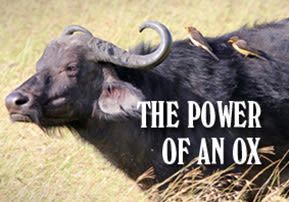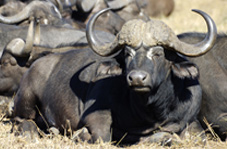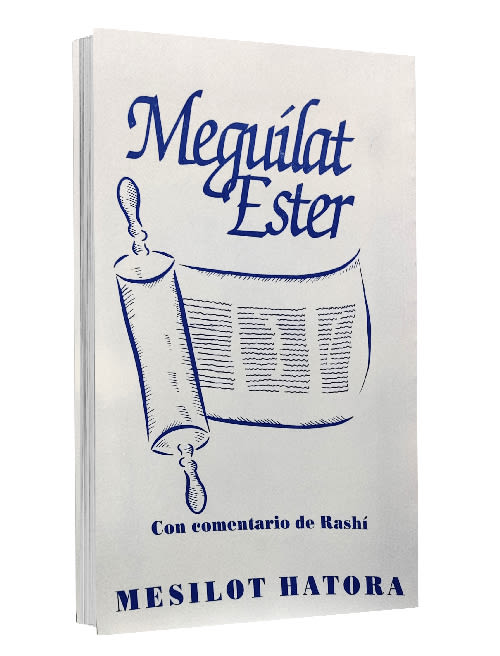
Vayechi: The Power of an Ox
Jacob's blessings were not just wishes of success and prosperity; they contained profound wisdom that focused on the unique talents of each of his sons...

Parshat Vayechi
In the final Parsha of the book of Genesis the Torah recounts the final moments of Jacob's life. On his death bed he bestows special blessings to each of his sons. These blessings were not just wishes of success and prosperity but contained profound wisdom that focused on the unique talents and abilities of each one of his children. The insights and spiritual boost the sons received from these blessings made the fulfillment of their specific tasks in this world much more attainable.
However, if we look at the wording of his blessings there is a fascinating and curious use of analogy that requires explanation. With this specific understanding, we will hopefully have a better grasp of the nature of his blessings in general.
One of the concepts included in his words was the comparison between numerous tribes and specific animals. Joseph is compared to an ox, Benjamin to a wolf, and, possibly the least complimentary, Dan is compared to a snake. Since Jacob's intention was to focus on the qualities and propensities of each of his sons, why did he use the metaphor of animals instead of simply focusing on the specific nature of each of these animals?
There are three approaches to this question that shed light as to the use of animals in this context. First, on the most basic level, in order to have a picture of the determination that Joseph had, and his descendants would need, the Torah uses the image of an ox. His tribe is symbolized by the stubborn determination to perform and complete the task needed by Hashem, his Master,. This basic use of analogy is reflected in the teachings of our Sages called Ethics of Our Fathers. "Yehuda the son of Tema said: Be bold as a leopard, light as an  eagle, swift as a deer, and strong as a lion, to carry out the will of your Father in Heaven." The idea of this teaching, as previously mentioned, is to give us a picture of the extent we need to exhibit these four qualities. Yehuda ben Tema understood that the charge to be bold, light, etc. would have a greater impact through picturing these specific animals. Without this vivid visual image, we might not develop these qualities to their fullest.
eagle, swift as a deer, and strong as a lion, to carry out the will of your Father in Heaven." The idea of this teaching, as previously mentioned, is to give us a picture of the extent we need to exhibit these four qualities. Yehuda ben Tema understood that the charge to be bold, light, etc. would have a greater impact through picturing these specific animals. Without this vivid visual image, we might not develop these qualities to their fullest.
The second insight requires us to radically alter our understanding of the Torah's analogies. The commentators note that there are technical difficulties comparing Joseph to an ox. An objection is raised that Joseph is referred to as an ox (Chap. 49: verse 6) and not like an ox. This objection carries over to the other tribes that are not compared to a specific animal (as opposed to in Ethics of the Fathers) but are actually called a type of animal. Based on this inference, some say that the "real" ox is Joseph, the "real" deer is Naftali and in order to have an idea of what qualities are hidden within them they are compared to an animal that has the same qualities. That is to say, the animals mentioned in the blessings are only there to provide an analogy as to the real qualities hidden within each of the specific tribes. Ultimately the true picture of stubbornness and determination can only be seen in Joseph and for the meantime we use an ox as a picture of what these qualities can also look like. Without being too esoteric, according to this explanation, the world is just a physical analogy and expression of the true qualities which are possessed by man.
Third, and finally, is the fascinating explanation of the Rebbe of Ishbitz, Rabbi Mordechai Yosef Leiner (1800-51), who connects the relationship of man and animal in a unique way. During the creation of man, Hashem said "Let us make man". The commentators are puzzled by this statement and wonder who was Hashem addressing? Rashi and other commentators offer different explanations. The Rebbe of Ishbitz provides a fascinating analysis to whom Hashem was speaking and the meaning behind these words. According to the Rebbe, Hashem was addressing all of creation, including the animals. He "spoke" to them instructing them to each give a small part of themselves to man so that through man's actions all of creation would be uplifted and connected to the Creator. Man got a piece of the ox, donkey, snake, etc. (even inanimate objects) in order to use these qualities and become a partner in all of creation by correctly utilizing these strengths and abilities. So when the brothers are referred to as an ox, donkey, etc. in a certain way the idea is literal. Joseph got a large percentage of the qualities of an ox to be used in Hashem's service. Naftali was particularly endowed with the swiftness of the deer, etc. Even though we are particularly gifted with certain specific qualities found in the world at large, each one of us is a literal conglomeration of the animal, vegetable, and mineral kingdoms. Parenthetically, there are times that man has fallen short of the lofty challenge and responsibility of uplifting creation, such as at the time of Noah and the flood. Man became so corrupt that we were unable to provide the spiritual fuel to energize creation. With man's demise came the destruction of the entire world including all forms of life. (Food for thought: According to this, it could be that the present extinction of numerous species is an expression of the spiritual malaise of man.)
Returning to Jacob's blessings, in short, Jacob told his sons they would carry within themselves a microcosm of the macrocosm of life. It was their responsibility to uplift themselves and the world around them.
One final point. How do we understand the seemingly uncomplimentary comparison of Dan to a snake? I was always bothered by this idea until a wonderful cousin of mine helped solve the riddle. This cousin has traveled the world taking spectacular photographs of wildlife. He told me that as far as he knows every culture uses snakes as symbols that represent forces of evil and darkness. Possibly the sole exception is Judaism where the positive comparison is made between Dan and the snake. Based on the Ishbitzer Rebbe's insights I think the idea is readily understandable. The snake is often attributed with a propensity to damage in a quiet, tricky fashion. Dan is called upon to use this craftiness and direct it towards enemies of Hashem. Even those elements which seem lowly and destructive are ultimately found in the world and in man to be used for a higher, more sublime purpose.
Based on the understanding of the analogy of animals in Jacob's blessing, we hopefully have gained a more profound picture of the entire nature of his final words. Through his blessings, specifically through the comparison to the various animals, he gave his sons a sweeping understanding of both their potential and their responsibilities to themselves and the world.
Man in Jewish thought is qualitatively different and more elevated than the animal kingdom. Even so, there is much to be learned from the commonalities. As stated before, we can use animals as examples of specific characteristics in order to enhance our own human behavior. On a deeper level we developed the idea that as we learn from animals, we should know that the strengths and capabilities found in the animal world are just an analogy to bring us one step closer to understanding the hidden powers within us. Finally, there is an ecology of the physical and spiritual worlds. The outer and inner worlds of man are intertwined and interconnected. Both are brought to their fruition by use of the various qualities found throughout the universe that were placed within man. The task is formidable. However, if we rise to the challenge, not only do we elevate ourselves but the entire cosmos around us.







Tell us what you think!
Thank you for your comment!
It will be published after approval by the Editor.